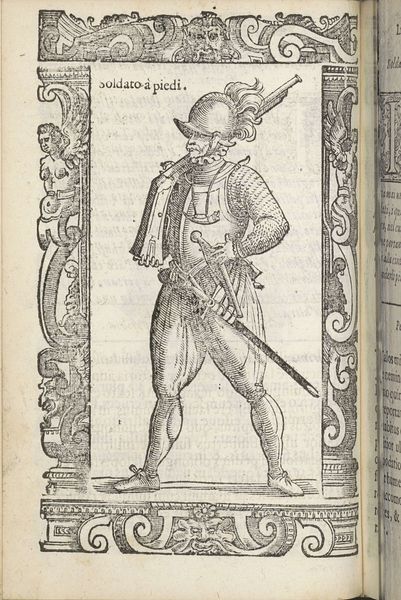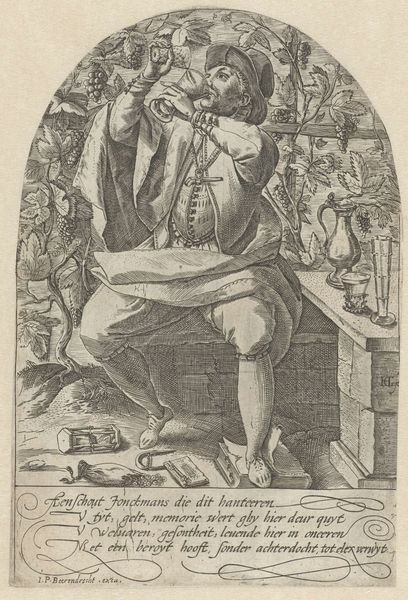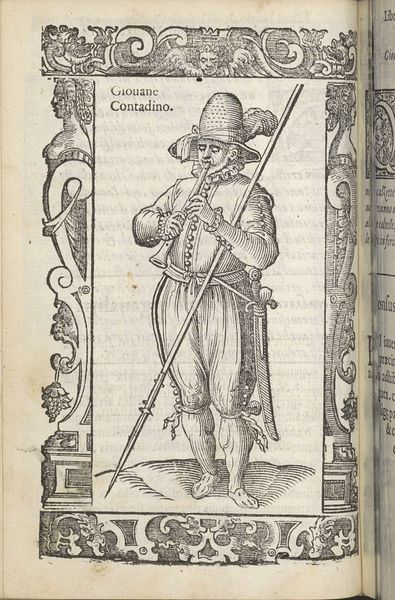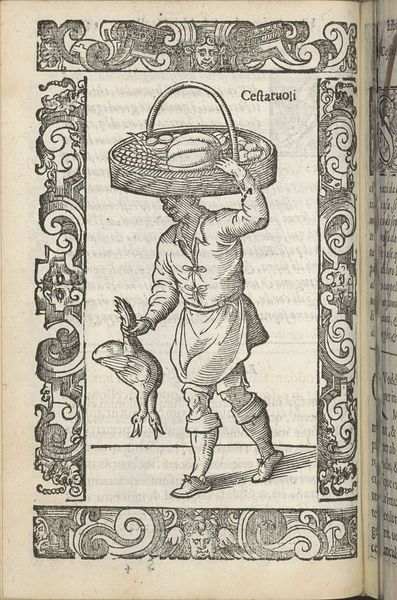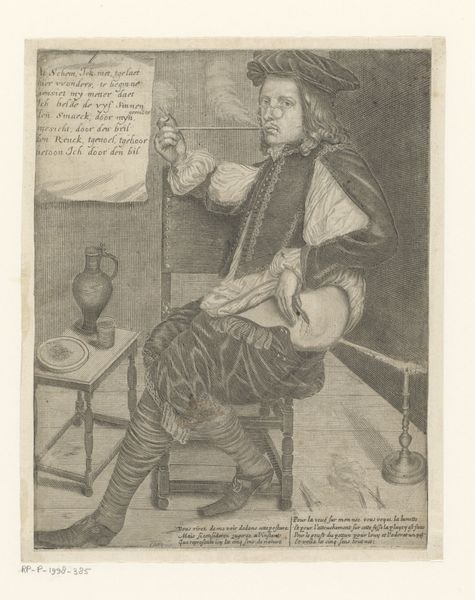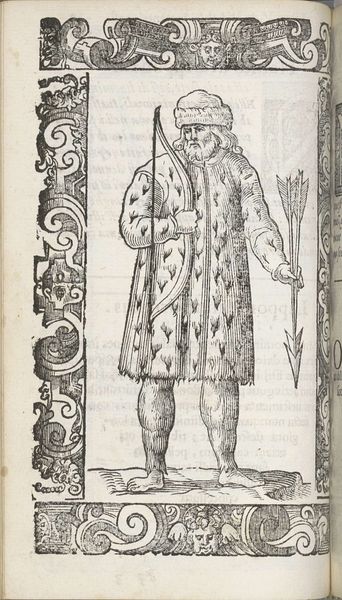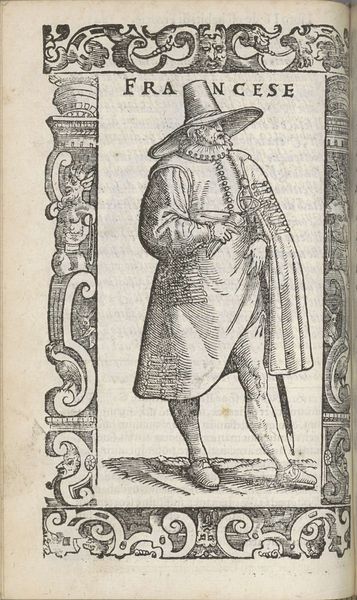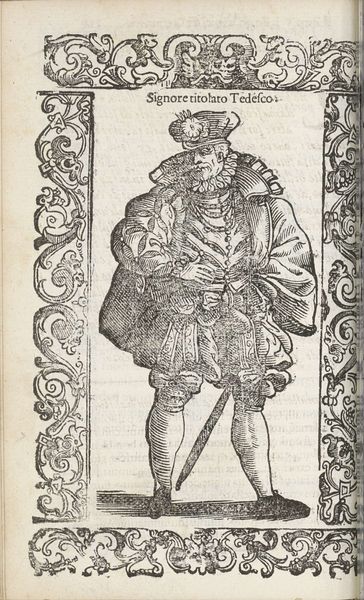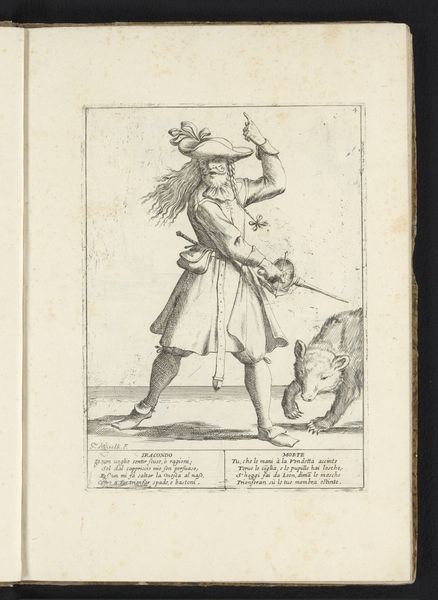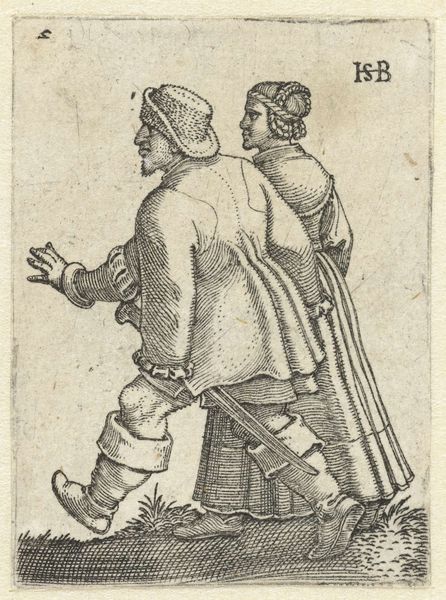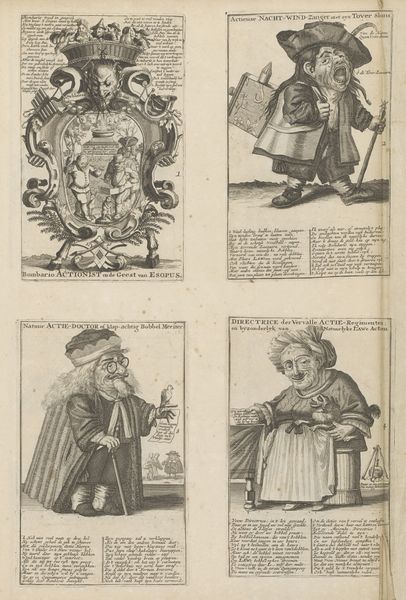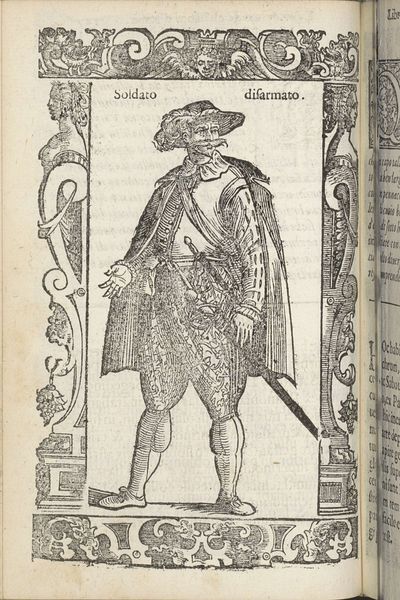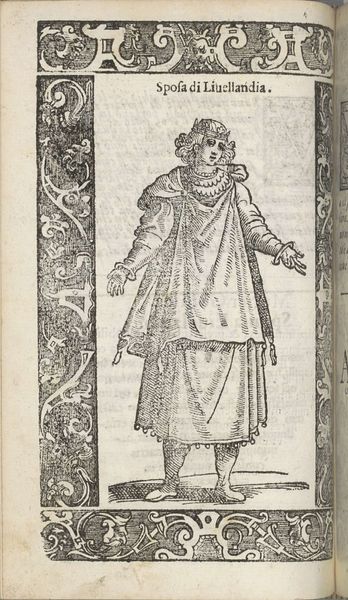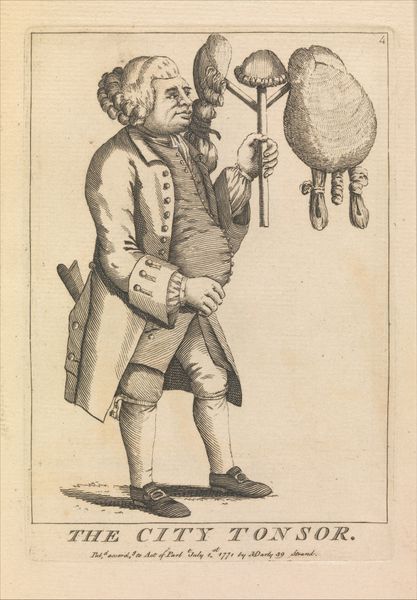
Dimensions: height 411 mm, width 305 mm
Copyright: Rijks Museum: Open Domain
Editor: This print, "Man en engel met loftrompet," made between 1761 and 1804 by Erven de Weduwe Jacobus van Egmont, has such a whimsical, almost celebratory feel, despite being a simple engraving. What strikes me is the juxtaposition of the man, presented formally, and the playful cherubic figure above him. What do you see in this piece? Curator: This juxtaposition is exactly what intrigues me! The figure with the trumpet, that’s Fame, and her pronouncements amplify the man's standing. Engravings like these aren't just decorative. The image works with symbolic language, a compact theatre of cultural memory. Is it just a portrait or is it perhaps making a more political statement? Editor: Political? How so? Curator: Consider the verses on either side of the image. They emphasize the man’s humility and virtue despite his wealth. It is paired with Fame announcing his integrity. What is he holding in his left hand? And what is the angel above him playing? Editor: He's holding his hat, and the angel’s playing a trumpet... So, the hat suggests humility and the trumpet announces his good character? Curator: Precisely! Think about the context: the late 18th century. What virtues were particularly important for men in public life during that era? What statement is he trying to make about himself to society? How might the flowers work in conjunction with the themes? Editor: Ah, so it’s less a portrait and more a carefully constructed statement of values, aimed at conveying a certain message. It makes me consider the role of visual communication within its historical environment. Thank you, that truly altered my initial view. Curator: And for me, it reinforces how powerfully prints worked, functioning not just as art, but as social media.
Comments
No comments
Be the first to comment and join the conversation on the ultimate creative platform.
